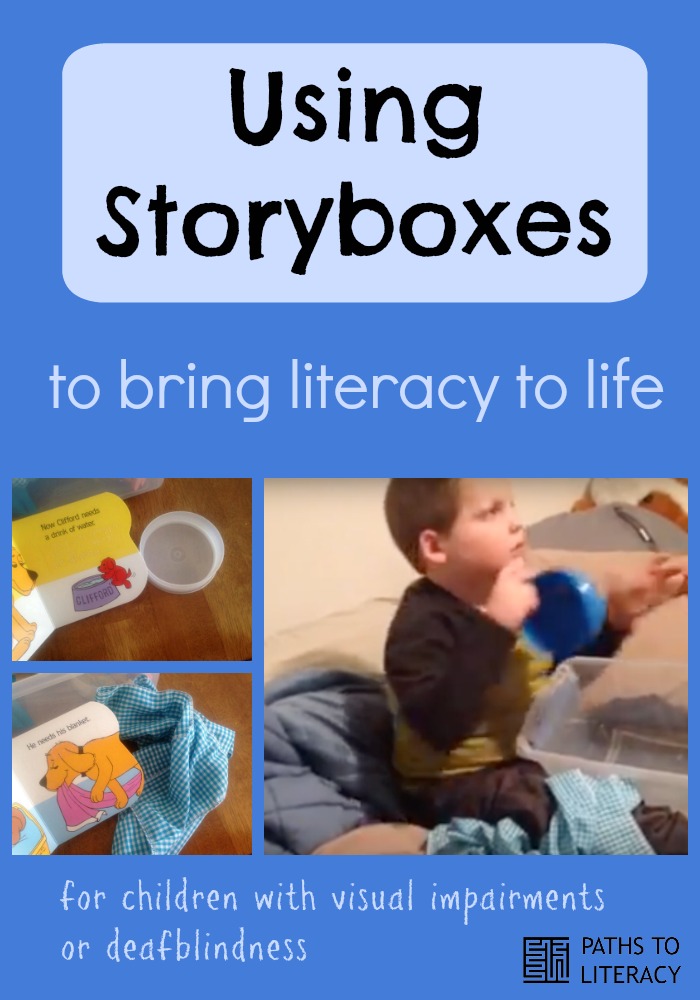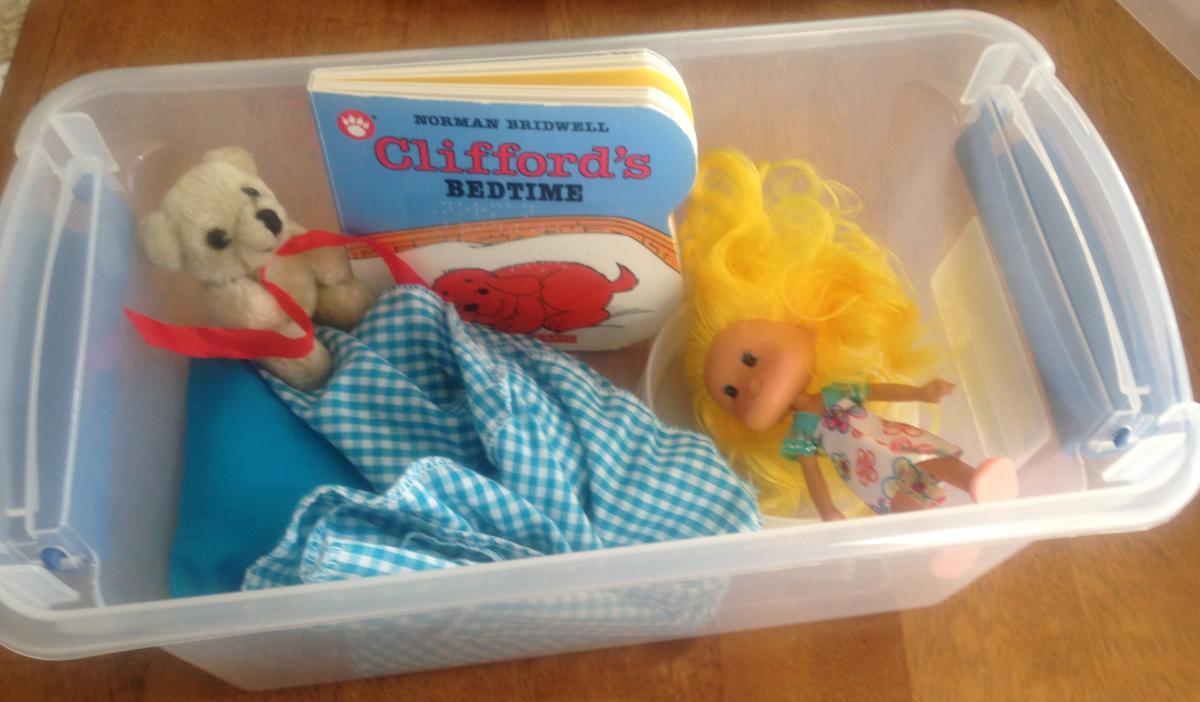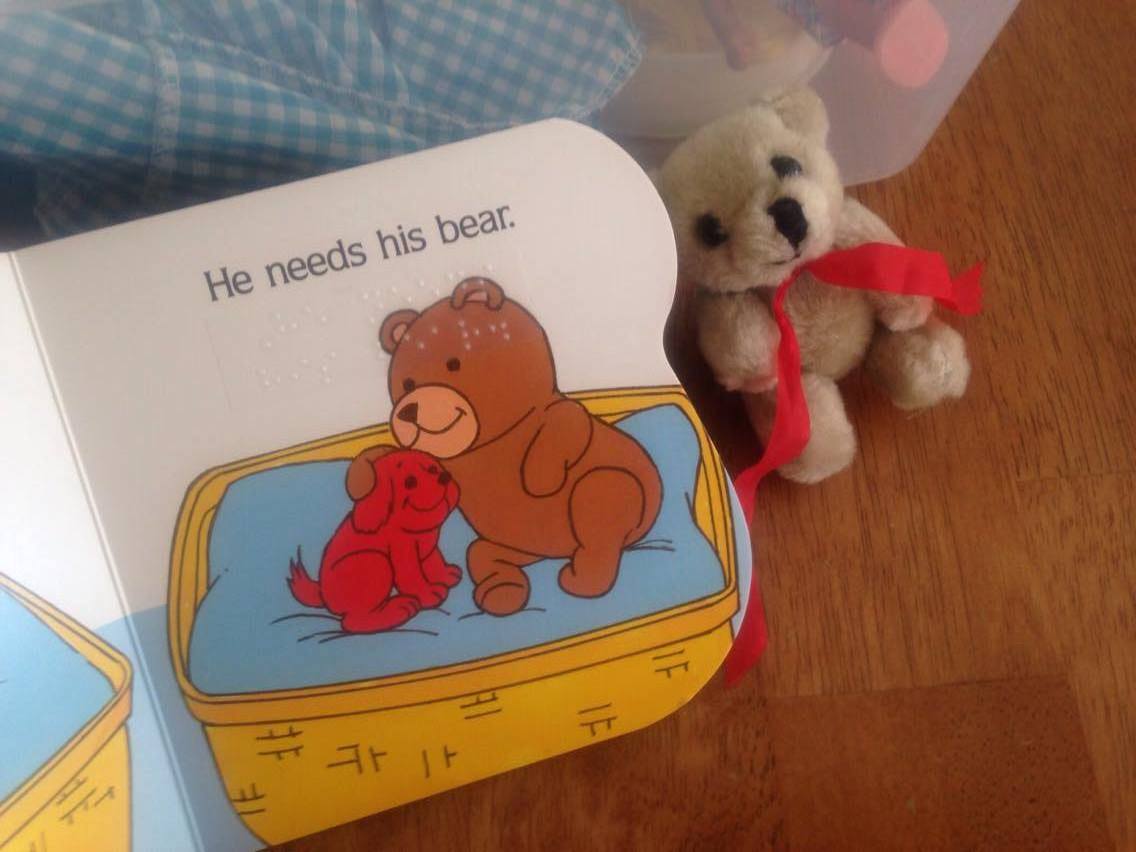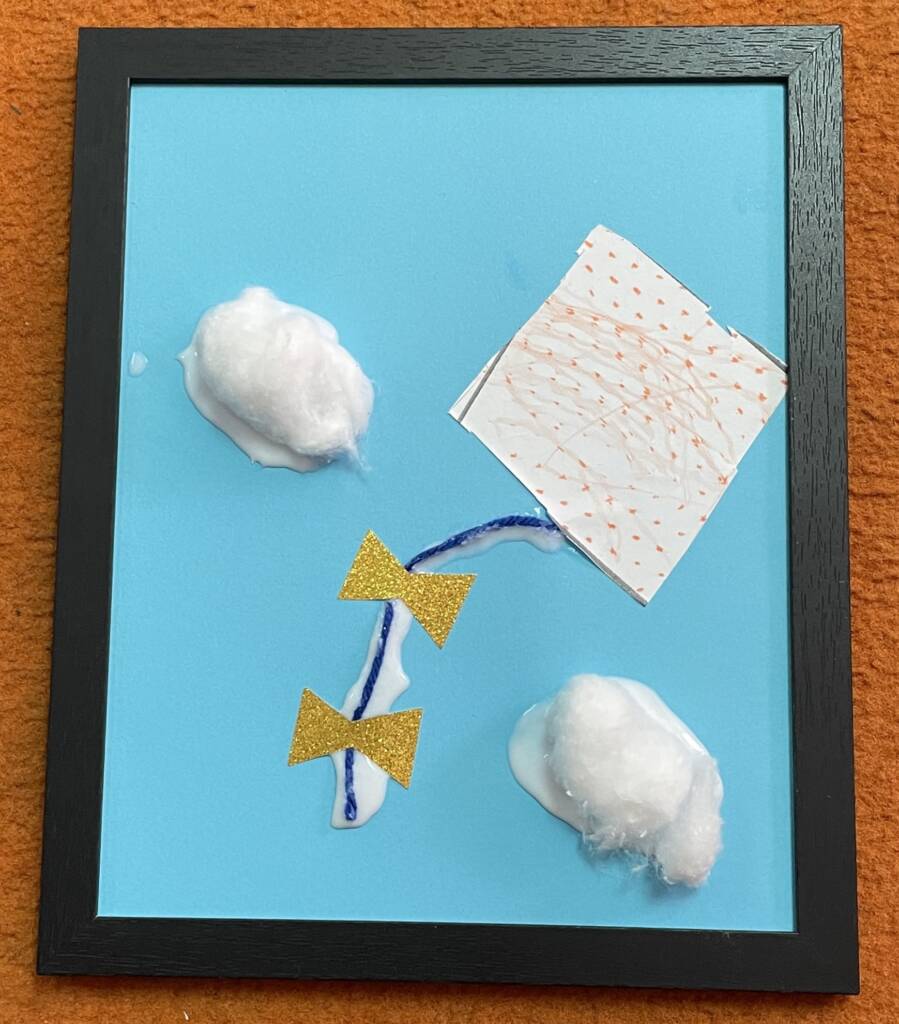Storyboxes are a great way to make stories come alive for our children with vision impairments. Storyboxes are also a way to make pictures in a children’s story accessible. A story box is simply a way to use objects to represent parts of a story by using these objects to support the storytelling process.
My son Liam is 7 years old and is deafblind. He is a braille reader and enjoys having stories told to him using story boxes. He also love to use story boxes to tell stories himself! Below is an example of how I have used a storybox with my son. This is only a guide and can be modified to fit the needs, interests, and level of your child.
Process:
Introduction:
- Read through the book before you introduce it to the child. Collect real objects to illustrate the story. Whenever possible, be sure that the objects are as close to actual size and function as possible. For example, if it mentions a bowl, get a real bowl, or a real blanket, etc.
- Once you have put together the storybox, you’re ready to explore it with the child. Before you start, give a brief introduction and summary about the story that you will be sharing together.
- Explore: If this is the first time that you will be sharing the story together, allow the child to explore the items in the box. Let the child’s questions about the objects guide your discussion. Introduce the characters, if applicable.
- Telling the story: Use the objects as you tell the story.
- Story boxes are also a great tool to support children in retelling a story themselves!
- Share!
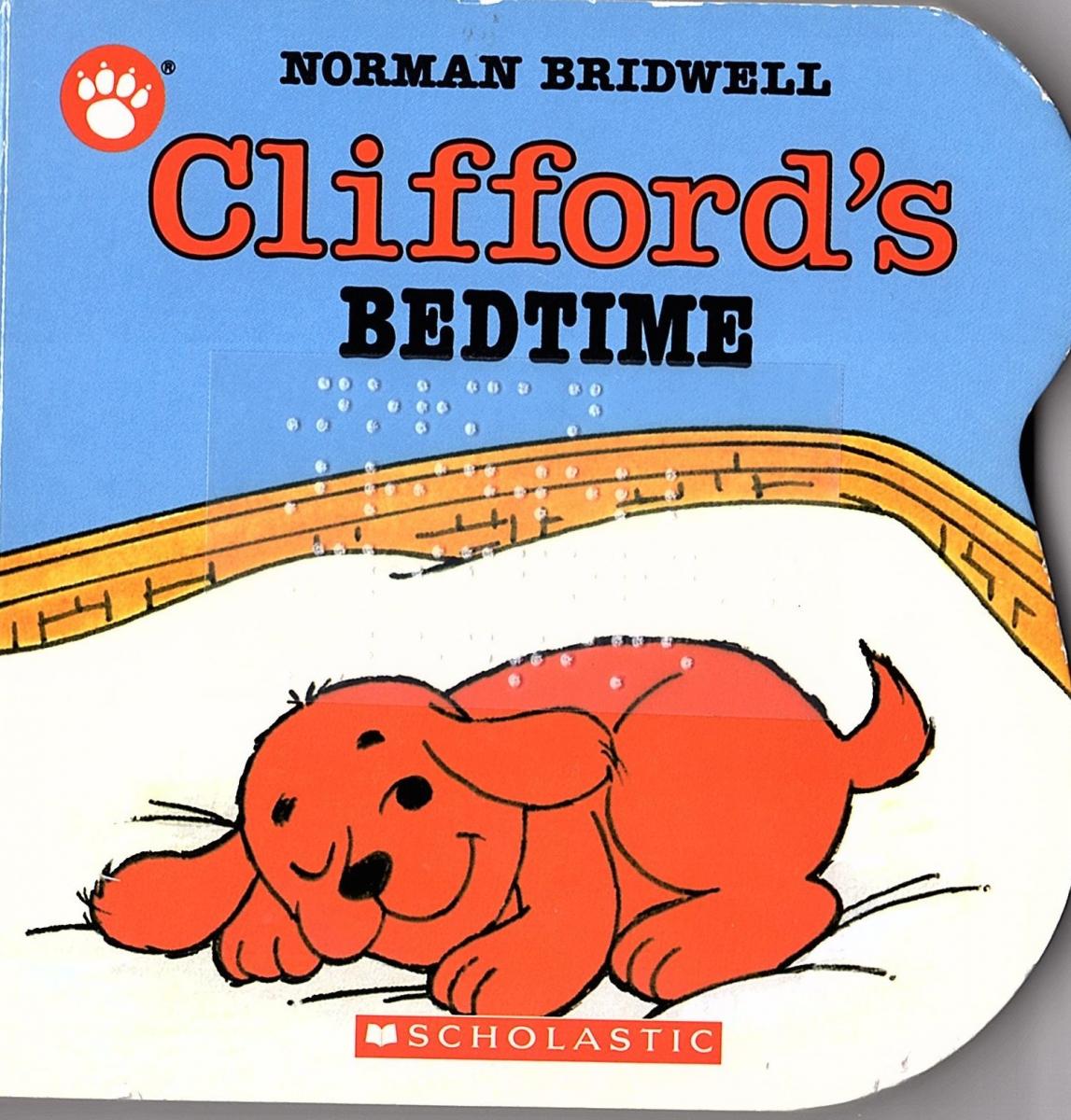
In this example, we are reading Clifford’s Bedtime by Norman Bridwell. This book lends itself well to being a storybox, as it is the story of a routine that is part of every child’s life, with many props that are familiar.
Video Demonstration of Using a Storybox
Below is a video I have recorded of Liam and me. Liam’s first language is American Sign Language (ASL), so I will be using tactile sign with him. Even though we are using sign, it is the same idea if you are working with a child that has typical hearing: you will just be using the first language of your child, no matter what it is.
The transcript is below the video. Be sure to turn on the closed captions (CC) for the the video.
Transcript of video of the storybox for good night, Clifford:
Liam: Out
Mom: Story, what? Mommy Dog and Baby Dog. In here, what? Blanket, right! Soft. What did you find? What’s that?
Liam: Bear
Mom: Yes, bear. Toy bear. This bear is Baby Dog’s toy. What other things are in there?
Liam: Doll
Mom: Baby doll. Water bowl is in there.
Liam: Water bowl
Mom: Yes, right. And the book. Can you find the book? You found it, right! Ok, ready to start the story?
Liam: Yes
Mom: ok!
—
Mom: Baby Dog bedtime. The mom helps bring the baby to bed. The Mommy Dog carries the Baby Puppy to bed in her mouth. The bed is right there.
Liam: The bed is here like this.
Mom: The puppy was not tired. He was awake and looking around. He can’t sleep. The puppy needed what? Bear. Mom brought the bear. Put it on the bed. Now the baby puppy needs what? He needs his baby doll. Put it on the bed.
Liam: Put them with the puppy!
Mom: They are with the baby puppy, correct. Now the baby puppy needs what? Mommy dog brings blanket. Yes, nice. Nice Mommy dog, right?
Liam: Yes
Mom: Now, Baby Puppy needs what? Drink of water. Now, what? Bear drinking too, huh? Funny. Baby puppy not tired. Needs what?
Liam: Water
Mom: Water finished. He needs a good night kiss from his mom. Sweet dreams baby puppy! The end. Did you like the story?
Liam: Show Grandma?
Mom: Do you want to tell Grandma the story?
Liam: Yes
Mom: Ok, I will go get Grandma.
Sharing or Retelling the Story
Having the child retell or share the story is a wonderful way to extend the activity. It gives the child a chance to practice sequencing and expressive language, and is also a good opportunity for the parent or teacher to assess how well the child has understood the story.
In the video below, Liam retells the story to his grandmother using the objects from the story box.
Transcript of video of Liam sharing the story box with his grandmother:
“He needs a doll. He needs a blanket. Baby puppy needs some water. The puppy drank the water. Say…ask him, the mom puppy does what? Oh you’re licking the water. Uh huh. He wants to walk now. (laughter) Puppy’s mom do what? (laughter) Um, good night kiss. (laughter)”
Organizing your story
How you organize your story depends on how you want to tell your story. Do you want the child to find the objects as the story unfolds? If so, will you randomly have them in a box? Do you want to organize them so the objects are easy for them to find? Are you going to be the one giving the objects to the child as the story continues? If so, it is helpful to have the objects nearby and in correct order so transitions run smoothly within the story.
Note to Families
Sometimes just knowing where to start can be a little overwhelming. I want to encourage you not to worry about if you are doing everything perfectly and if you follow every step exactly. The important thing is that you are reading or telling stories and interacting with your child! Things will become smoother with practice. Your child will benefit (and love) having stories read with them and it is such an important step in helping to support a love for literacy! You will notice in this video that American Sign Language is not my first language and that I am not signing everything perfectly. That being said I did not want that to stop me from being able to share a story with my son. If I waited until I was perfect at storytelling, my son would be waiting a long time!
